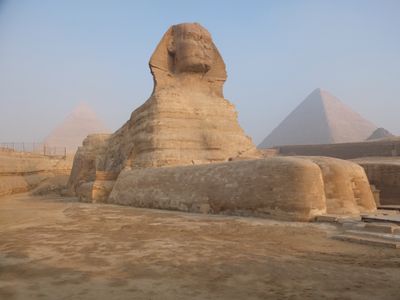Institute for the Study of the Origins of Civilization
The Institute for the Study of the Origins of Civilization (ISOC) at Boston University’s College of General Studies is dedicated to the investigation of the deep foundations that underlie the rise of civilization. The standard paradigm, still accepted implicitly (as well as explicitly) by many scholars and laypersons, follows the thinking outlined by V. Gordon Childe in the middle of the last century: that humanity has progressed through a series of stages (“revolutions”) from savagery (foragers, hunters, and gatherers) to barbarism (early agriculture and husbandry associated with village life – the “Neolithic Revolution”) to civilization (recognized by such attributes as monumental stone architecture, literacy, cooperative social behavior guided by centralized authority, and cities – the “Urban Revolution”). In terms of chronology, according to the traditional paradigm, the stage of civilization was first reached during the fourth millennium BCE in Mesopotamia, Egypt, and the Indus Valley. Independently, thousands of years later, civilization was achieved in the New World. (See: V. Gordon Childe, 1950, “The Urban Revolution.” The Town Planning Review, Vol. 21, No. 1, pp. 3-17.)
New discoveries, as well as theoretical reevaluations, have questioned the standard paradigm, both in terms of chronology and the driving factors leading to civilization. Work in Egypt, namely examining the origins of dynastic Egypt, initially through reevaluating the age of the core body of the Great Sphinx (the head is a dynastic re-carving), demonstrates that the great civilization of the Nile has roots going back thousands of years further than originally believed. The discovery of the sophisticated archaeological complex of Göbekli Tepe in modern southeastern Turkey (northern Mesopotamia), the oldest portions of which date to the tenth millennium BCE or earlier, demonstrates that monumental stonework and other attributes of civilization existed prior to the end of the last ice age (that is, prior to circa 9700 BCE). At Göbekli Tepe in particular, there is physical evidence of turmoil and collapse, and the site was intentionally buried circa the ninth millennium BCE. This site, as well as other evidence accumulating from around the world (for example, the late ice age site of Gunung Padang on modern Java, Indonesia, which was located on the edge of the now submerged subcontinent of Sunda/Sundaland), support the contention that there was a cycle of civilization that collapsed during the catastrophic Earth changes and accompanying turmoil at the end of the last ice age.


Scholars associated with the Institute for the Study of the Origins of Civilization are exploring and critically evaluating new narratives of the rise and demise of civilization. Fundamental questions of concern include:

- How do we define civilization?
- How do we recognize civilization in the archaeological record?
- What are the ingredients and driving forces leading to civilization?
- What factors underlie the collapse of civilization? In particular, what caused the demise of early civilization evidenced at the end of the last ice age?
What relevance does the study of early civilization have for modern society and modern civilization?(Arguably, today’s sophisticated technological civilization is highly vulnerable to both natural and human-induced catastrophes. The truism that we can learn from the past is perhaps more important and relevant than ever before.)
The ISOC takes an interdisciplinary approach, drawing from such fields and disciplines as archaeology, geology, geophysics, astronomy (particularly archaeoastronomy), genetics, biogeography, climatology, ecology, paleontology, chemistry, geophysics, history, sociology, comparative mythology, linguistics, art history, and other areas of expertise. Its associates are not afraid to challenge the status quo or conventional paradigms through the use of new evidence and new theoretical evaluations of existing data. In addressing the rise and demise of earlier civilizations, and in particular a cycle of civilization that ended with the end of the last ice age, scholars need to consider fundamental topics regarding the cause of the end of the last ice age and other climatic and Earth changes. (A leading theory that is being studied involves unusual solar activity – a major solar outburst – that initiated the end of the last ice age and was a driving factor in the demise of an earlier cycle of civilization).


Currently in its incipient stages, it is intended that the ISOC will network and grow to be a major force in the field. Recognized scholars and graduate students can become affiliates of the ISOC. The Institute is actively seeking external support and funds to further its objectives, including through field research, fellowships, and visiting lecturers. Directed studies at both the undergraduate and graduate level can be arranged, supervised, and administered through the ISOC. Plans are being made to host a biannual international conference addressing topics relevant to the origins of civilization.
Affiliate Members
Institutional Affiliate Member:
California Institute for Human Science
Professional Affiliate Members:
Thomas G. Brophy, Ph.D.
Manu Seyfzadeh, M.D., Ph.D.
Media Coverage
- What Newly Discovered Ancient Civilizations Can Teach Us on GOOP.com
- Interview with Joe Rogan of the Joe Rogan Experience podcast
- Turkey Inaugurates ‘Top Archaeological Wonder’ In Bid To Draw Tourists on The Media Line
Contact
For more information, please contact the Director of the ISOC, Robert M. Schoch, schoch@bu.edu.